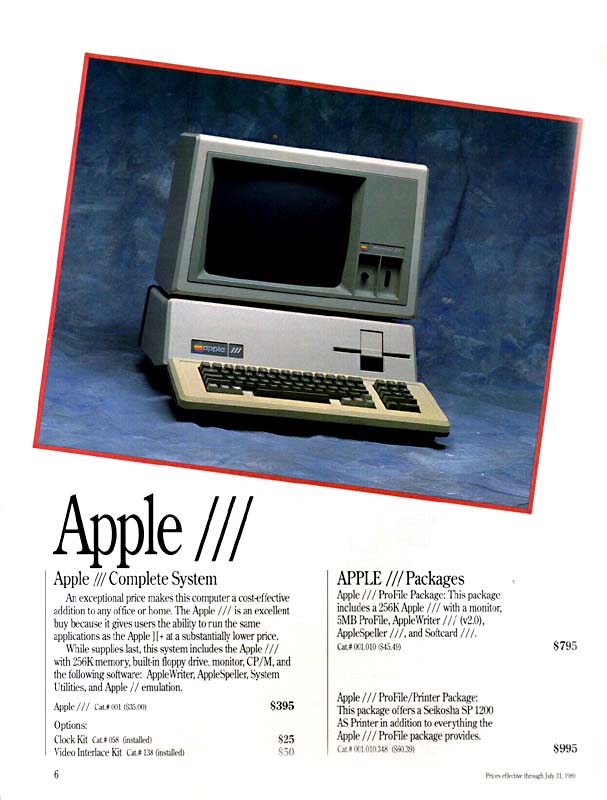 December 1, 1981: After the disastrous rollout of the “next-gen” Apple III the previous year, Apple corrects the computer’s most glaring hardware faults and relaunches it.
December 1, 1981: After the disastrous rollout of the “next-gen” Apple III the previous year, Apple corrects the computer’s most glaring hardware faults and relaunches it.
Unfortunately, the damage has already been done. Apple experiences its first “flop” product with the Apple II‘s doomed successor.
Apple III: Everything to everyone
The Apple III should have been brilliant. Unlike the Apple-1 and Apple II, which were essentially homebrew projects, the Apple III had the full weight of Apple the corporation behind it.
Although sales of the Apple II showed no signs of slowing down, Apple inevitably needed an updated computer to replace it. The early stages of the Macintosh project were already underway, but it was clear the Mac was nowhere near ready to go. All eyes were therefore on the Apple III to become the computer Apple needed.
At the start of the project, Apple co-founder Steve Jobs — eager to take part in any effort with the potential to become the next big thing — printed up a series of glossy posters for employees, reading: “The decisions you’re making now helped ship 50,000 Apple IIIs in 1980.”
Apple positioned the Apple III as a business computer. The company knew IBM would attract business users with its personal computer. Apple therefore threw everything at the wall to create a computer that would appeal to serious business users and home consumers alike.
Unfortunately, this resulted in a computer built by committee, with everyone involved promoting their own ideas about necessary features. This feature creep meant that a project Apple wanted finished in 10 months stretched to two years.
“Everybody had certain ideas about what the Apple III should do and unfortunately all of them were included,” quipped an Apple engineer at the time.
Apple III specs: It’s what’s inside that counts

Photo: Apple
In terms of specs, the original Apple III boasted a 2-MHz SynerTek 6502A processor, a whopping 2KB of ROM, 128KB on-board RAM (256KB in the revised model launched on this day in 1981), and four slots for peripherals.
It ran twice as fast as the Apple II. It was also Apple’s first computer to come with a built-in 5.25-inch floppy drive.
Given the Apple III’s much-publicized problems, it’s ironic that it ran an operating system called Apple SOS. According to Apple, this stood for Sophisticated Operating System. It wound up influencing the design of ProDOS, later used on Apple II computers.
Unfortunately, the Apple III did not become a success when it launched in the fall of 1980. It supported a limited range of software because it wasn’t backward-compatible with DOS 3.2 and 3.3, which Apple II software tended to use. More seriously, its motherboard overheated, causing its chips to loosen.
Combined with other faults, this earned the Apple III poor user reviews. It floundered in the marketplace.
The new, slightly improved Apple III
The Apple III revised edition, which today’s “Today in Apple history” commemorates, launched in December 1981. It included upgraded specs and new software. Apple also introduced a ProFile 5MB external hard drive, although the relaunch didn’t receive much publicity from Apple’s PR firm.
Existing Apple III customers probably felt “happiest” about the revised edition. Some 2,000 of them got a new machine as a free upgrade because of problems encountered with the earlier model.
Ultimately, the Apple III got one more upgrade (the later Apple III Plus) before Cupertino ditched the computer lineup altogether. The Apple III and the Apple Lisa stand out as the company’s two concerted attempts to compete in the business market — and the two biggest failures Apple suffered during this era.
Would the Apple III have succeeded had the IBM PC not arrived around the same time, and at a lower price point? Perhaps, but the Apple III suffered from many problems that made success a challenge either way.
Do you remember the Apple III? Leave your comments below.


